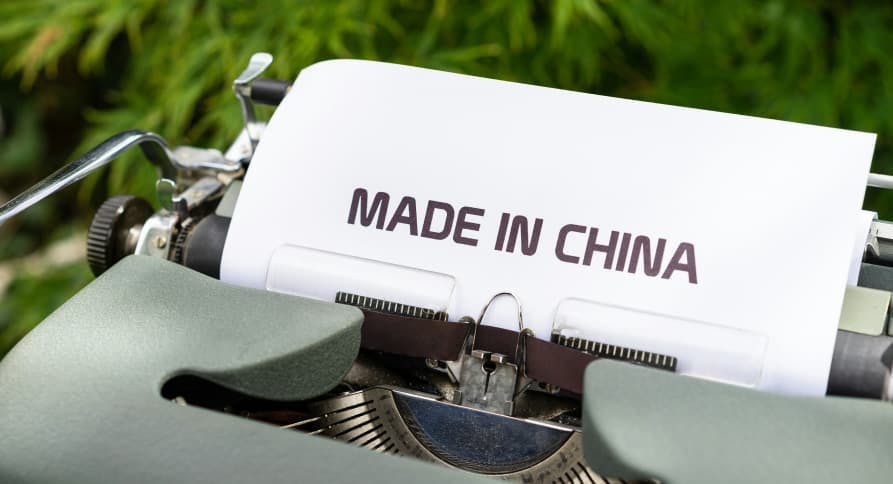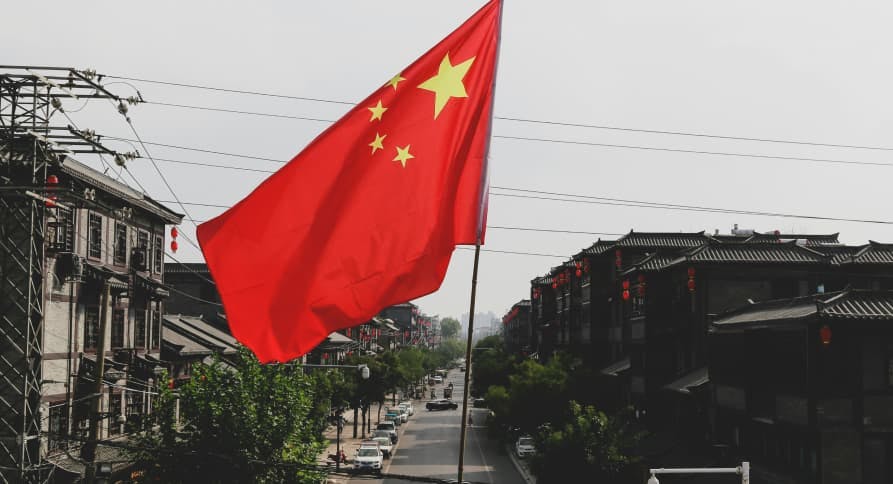ESG / CSR
Industries
Should We Definitely Drop ‘Made in China’ Products?



China is often overlooked as a powerhouse country in the shadow of the United States’s political and consumerism, but in reality – many of the products we buy on a day-to-day purchase are bound to have the ‘Made in China’ sticker label on the back of the product.
‘Made in China’ products are common amongst several countries and utilized by several companies: such as Apple, Nike, and more.
In this article, we’ll discuss what ‘Made in China’ products are, why companies choose to sell ‘Made in China’, and if we should stop selling ‘Made in China’ altogether.
What are ‘Made in China’ products?
The infamous ‘Made in China’ label refers to products that have been made in China – this can be anything from a dance leotard, a stuffed animal, to a pair of sneakers.
China began mass producing at the rate it is now as a result of the Law of the People's Republic of China on Chinese-Foreign Equity Joint Ventures – which created several profitable zones that remained free of tax-incentives or other regulations. This allowed China to start mass producing at an unprecedented rate that other regions of the world would never have been able to surpass.
💡Many businesses worldwide started to move their production overseas once China joined the World Trade Organization in December 2001.
Some examples of companies that produce their goods in China include:
- Apple
- Nike
- Converse
- Dell
- Forever 21
Since China is able to mass produce with little to no restrictions, ‘Made in China’ products have become popular – as many companies will choose to execute the production of their goods in China for cost-savings and faster turn-around times. Therefore, it’s more than possible to find a ‘Made in China’ label from almost any product in any industry.
👉As of January 2024, China’s annual international export and import of China's goods reached a 4234.4 billion RMB– marking a 23% increase from January 2023. That’s equivalent to around $600,000 USD!

What are some of the pros of ‘Made in China’ products?
There are several reasons as to why companies will choose to manufacture their products in China, such as to reap the benefits of reduced labor costs, easy access to various supply chains, and readily available access to various markets.
Here are some additional reasons why these brands choose to manufacture in China:
- Cost-Effective Labor – Since labor costs in China are lower than many other countries, such as in the United States, Canada, or European countries – China is a good choice for companies looking to cut back on their operational costs. This is one of the main reasons moving production overseas to China is appealing for many businesses regardless of their industry.
- Experts in the Workforce – China not only offers cheaper labor, but more skilled workers that may not be available in a company’s country of origin. However, there is expected to be a shortage of skilled workers as a result of the newfound demand. This is something for companies to consider if they are looking to move production overseas to China.
- Specialized Infrastructure – Once you become the global powerhouse for production, it’s essential to build infrastructure to accommodate the new demand. China has successfully done this, having developed transportation networks, manufacturing sites, and ports to help streamline production and make importing and exporting materials and products easier.
- In-House Marketing Opportunities – One of the overarching benefits of companies seeking to produce their goods and services in China is that it can allow their product to be sold and reviewed before beginning marketing campaigns in their targeted markets. For example, Nike can begin selling their new sneakers to those already in China – allowing positive reviews and word-of-mouth to circulate and bring buzz to the product before it hits the shelves elsewhere in the world.
- Streamlined Supply Chains – Seeking to decarbonize your company’s supply chain is one of the most challenging parts for businesses seeking to reduce their overall emissions. Luckily, moving production operations over to China may help companies to accomplish this more difficult task – as there are more raw materials available in China due to the massive demand for production processes.
👉 Ultimately, the main reason why several companies will decide to move production and various business operations to China is for the reduced operational and labor costs, improved market access, and ability to streamline their supply chain.

What are some of the consequences of using ‘Made in China’ products?
Businesses may experience financial and marketing benefits when moving their production overseas to China, but ‘Made in China’ products aren’t good for the environment – with China often creating more carbon dioxide emissions for producing the same product that could have a lower carbon footprint if made elsewhere.
Additional negative impacts to importing or exporting goods ‘Made in China’ include:
- Higher Carbon Footprint & Pollution-Related Consequences – Research has shown that goods produced in China, especially low-quality goods, can create excessive air pollution – which can compromise the health of surrounding Chinese residents. In fact, 1.2 million Chinese people died from fine particulate matter in 2015 alone. These numbers are only bound to increase as production continues to ramp up across China.
- Potential for Low Quality Goods – China does have access to more raw materials and skilled workers at an affordable price compared to other regions of the world, but there is also a serious risk of receiving low-quality items when they are made in China. This is most likely to happen when ordering a dress or technological accessory on a third party website such as Amazon or eBay. In order to mitigate this risk, it is imperative that consumers do some in-depth research on their product of interest by reading customer reviews and by viewing the product on more than one website.
- Delays & Back Orders – China can certainly mass produce, but they may not be able to ship products at the same rate they manufacture them. This is because these products must undergo customs before departing China in addition to being loaded on a long-haul flight. This can cause delays and potential back orders, especially as the customers purchasing the products from China are likely to be located in the U.S. or Europe – both of which require a minimum of 7 to 10 days for shipping due to the longer distances.
👉 The negative impact of importing and exporting ‘Made in China’ products is that the purchased item could end up being a hit or miss, increased risks of pollution-related deaths, and inconsistent shipping and arrival times. However, the world has become accustomed to using China as a manufacturing hub – leaving many of us to wonder if it would be worse for the world if we were to drop ‘Made in China’ products altogether.

What would happen if the world stopped using ‘Made in China’ products?
If the world were to stop importing and exporting ‘Made in China’ goods, it would impact both China and other countries – but more specifically, it would create a negative impact for consumers in other countries that currently rely on ‘Made in China’ goods.
Specifically, in the U.S. – Americans and the U.S. government would most likely attempt to produce goods such as laptops, clothing, and more within the country. In the event you didn’t already know, tensions in the trading relationship between the U.S. and Europe have already been rising in the midst of various global conflicts – but even if trade continues to taper off between these nations, China will remain pivotal for the rest of the world.
However, in the event of this extreme – let’s say the United States did try to take over the production for many of the infamous, ‘Made in China’ products. For starters, it would be exponentially more expensive to produce products such as the iPhone in the United States. As a result, the prices for these products would go up – contributing to inflation, which is something that countries in Europe and the United States alike have already suffered from in recent years.
Another possible outcome if the world were to stop directly trading with China and purchase ‘Made in China’ products is that the entire trading route would change. For example, other countries that would not be able to produce goods in-house such as elsewhere in Asia or South America would probably continue to purchase goods from China, change the labels, and resell the goods to countries such as the United States for a profit.
👉 Overall, if we were to stop purchasing goods from China, the popular ‘Made in China’ label would slowly become obsolete – but China would probably continue producing goods and sell them to other countries, ultimately expanding the worldwide trading network.

Should we continue to use ‘Made in China’ products?
Ultimately, deciding whether or not to continue using ‘Made in China’ products will be a personal choice on behalf of companies – but there are several things to consider.
Here are some things that your company should keep in mind when deciding whether or not to proceed or halt production operations in China:
- Disruption to the Global Supply Chain – China still plays a critical role in our global supply chain, with up to 35% of apparel alone being imported into the U.S. from China in 2023. Therefore, if we were to drop ‘Made in China’ products entirely – the world would suffer from a massive global supply chain disruption.
- Ethical & Environmental Concerns – As the availability of skilled labor in China begins to decrease in conjunction with rising concerns regarding the air pollution created by China’s production practices – companies and consumers alike may want to stray clear of ‘Made in China’ products for the sake of adhering to higher expectations for ethics and protecting the environment.
- Political Tensions – Existing and ongoing strain between nations may affect how products are both sourced and traded. Therefore, it isn’t a bad idea for companies to diversify their supply chains – which can also help to boost supply chain resilience.
At the end of the day, ‘Made in China’ products are a cause for concern – but more so for the environment than they are for business endeavors. In fact, ‘Made in China’ products have helped both businesses and consumers alike produce and purchase desired products at an affordable price – and if, ‘Made in China’ products are to go away, as would the reasonable prices.
However, if ethics and protecting the planet are some of the primary concerns for your company or lifestyle – it’s a great idea to start looking into other options besides ‘Made in China’ products, and we at Greenly can help your company get started.
What About Greenly?
If reading this article about ‘Made in China’ products has made you interested in reducing your carbon emissions to further fight against climate change – Greenly can help you!
It can be challenging to fully understand which ‘Made in China’ products your company should continue to sell or discontinue, but don’t worry – Greenly is here to help. Click here to schedule a demo to see how Greenly can help you find ways to develop the perfect climate strategy for you.
Greenly can help you make an environmental change for the better, starting with a carbon footprint assessment to know how much carbon emissions your company produces.




